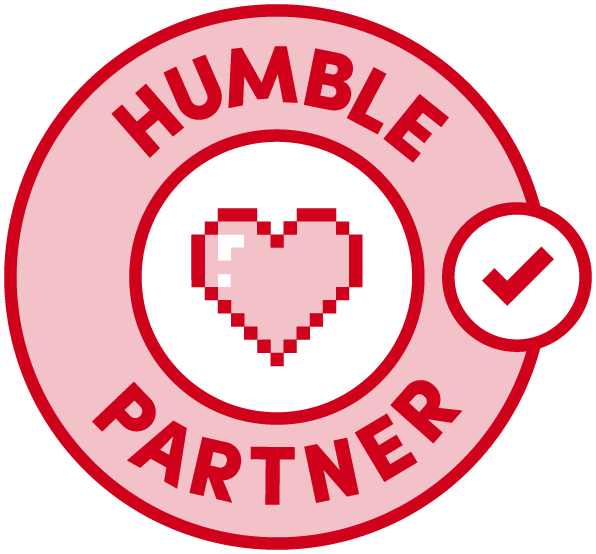I’m a handheld video game enthusiast. I’m sure of this, because people in the office make fun of how much I use and love the PlayStation Vita (hi, CNET!). The first console I owned was a Game Boy, and I’ve owned and loved every Nintendo and Sony portable released since (even the PocketStation). I have a long commute, so I always have a dedicated gaming device in my backpack. But lately, I’ve been spending an exceptional amount of time on a platform I had previously written off: an iPhone.
Now that your eyes have rolled, I want to clarify that I’m not talking about the kinds of games you might traditionally associate with being “phone games,” though I do love those–I’ve played far more than a healthy amount of Marvel Puzzle Quest, and I love playing the cool stuff that crops up in the bespoke iOS scene: Florence, Reigns, Threes, 80 Days, and anything by Zach Gage. Instead, my recent revelation involves the kinds of video games that I would have previously preferred to play on a home console or PC.
Florence is pretty cool. You should play Florence.
Here’s an obvious statement: There’s never been a better time to be a handheld gamer. The 3DS is filled with great, unique first-party Nintendo titles. If you like Japanese RPGs, 2D platformers, and revisiting the finest titles in the original PlayStation library, the Vita is incredibly good, I promise (that OLED screen! That d-pad!). And of course, the Nintendo Switch is a fantastic hybrid console that redefined what kinds of games I could expect from a portable system.
Now, thanks to my phone, I’m getting that same Switch-style buzz once again. I recently took a vacation, and as usual, I packed my three portable consoles to entertain me during periods of extended downtime. The thing is, you can’t always prepare for when or where extended downtime happens. For one reason or another, there were a few times where I felt like playing a video game, didn’t have a console on me, and eventually was content to see what was on my phone so I could stop looking at the ocean or whatever for 15 minutes.
Tired of what I already had installed, I browsed the App Store for anything that caught my eye, and a free demo of Sid Meier’s Civilization VI was what did it. I’d been thinking about picking it up again on Switch, and was now morbidly curious to see how it ran on an iPhone. As it turns out, pretty well. It was visually impressive enough to pop on the small screen, ran smoothly with a smartly adjusted UI, and didn’t appear to have any feature concessions compared to the PC version. It was also the perfect game to play on a portable device: slow-paced and turn-based.
Civ VI on an iPhone–it’s better than you think, but still a little pricey.
That experience was a turning point for me, and I learned a bunch of things at that moment. One: 30 bucks is too much money to pay for a second copy of Civ VI, especially when it doesn’t have the expansions. Two: Phones are capable of surprising technical performance. Three: The best console is the one you have with you. Four: The convenience of being able to download games wherever is very good. Five: I don’t have five things.
I’m very aware that all the people I see playing PUBG and Fortnite on the train, as well as the entirety of China, are eager to tell me how late to the party I am. But ever since then, I feel like I’ve reconfigured the part of my brain that decides what kind of games would be more suitable as a PC, console, or handheld experience. For certain titles, I’ve managed to overcome the mental hurdle that stops me from tackling my pile of shame with a newfound curiosity that wants to see how differently they play on a phone.
I really enjoy playing short, focused games. But I’ve missed out on a bunch because I’ve always believed that I needed to dedicate a good chunk of time in front of a monitor in order to get through one, and often by the time I get home from work, all I want to do is play more Tetris 99 or, you know, spend time with my family. But ever since I got over myself, I’ve managed to play and finish a bunch of 2018 games I’d put on hold in a week’s worth of public transit rides–games like Donut County, The Stillness of the Wind, and The Gardens Between. I recently picked up Whispers Of A Machine after resolving myself to the fact that I was never going to find the time to sit down at a PC to play it, and as it turns out, my phone is perfect for the point-and-click adventure games I love so much. These more technically conservative titles also perform virtually like-for-like with their desktop versions, which helped eliminate my fears of opting for a “lesser” experience.
Even more graphically demanding titles can impress: I already own two different versions of challenging puzzler The Witness, but never found the courage to finish it. I then bought it for my phone, and I was surprised by how decent it looked. More importantly, I found myself building a different kind of relationship with it–one that I hope will finally help me see the end. If I’m stuck on a particularly hard puzzle, I can easily put it away and mull over it while I do something else. And, because it loads right where you left off, I can take another quick stab at it while I wait for a coffee.
The Witness–I’m not going to let Jonathan Blow defeat me.
However, I’m not completely abandoning my other handhelds–Persona Q2 and Cadence of Hyrule just came out, after all. I’ll absolutely chase after any game that gets me excited, but I’m finding that the convenience of form factor also plays a big part in what I now choose to pull out. If it’s standing room only on my train, or I want to lie sideways in bed, I’m less hesitant to pull out a Switch. The Switch is great, but it’s a little too big in these instances. It really isn’t a big deal to pull out a phone. Certain games, like The Gardens Between, Elder Scrolls Blades, and various Dragon Quest ports, have the option to be played with one hand in portrait mode, which I am incredibly thankful for.
The relatively lower price points for the iOS versions of games (unless you’re 2K or Square Enix) takes the sting out of having to buy some of these titles for the second time. I’m happy to throw down a few bucks to give myself a portable version of something I know I liked, but want to find more avenues to play. The convenience of being able to download the games over a cellular network instantly helps, too. I had a sudden hankering to play a good tactical strategy game on the way to work the other day, so I redownloaded XCOM: Enemy Within on iOS. It’s not as good as XCOM 2: War Of The Chosen, but it was available and ready to be downloaded as soon as I had that impulse. I saw GameSpot’s Tamoor Hussain tweet about Pocket Cities, so I gave that a try (I liked it). While I was walking, I heard Giant Bomb talk about Brawl Stars on a podcast, so I downloaded that too (I didn’t like it). Everyone is still talking about The Outer Wilds, but it’s a game that I can’t find a spare few hours in front of my PC to download and actually play. The ability to quickly feed my whims on a phone is incredibly useful.
I came to another realization while thinking about my new habits. When the Apple Arcade game subscription was announced in March, I thought it sounded interesting, but outside of a few games that I was already planning to play on other platforms, it didn’t think it was for me. I’m not an Xbox Game Pass subscriber, nor an Origin Access person. I don’t want to pay a monthly fee for access to a bunch of games I’m not going to play. I’m a Nintendo Online subscriber, but I rarely play the included library of NES games because I forget to download them until I’m browsing the library on a bus.
Take Two CEO Strauss Zelnick recently expressed a similar skepticism over video game subscription services on an investor call, saying “people do consume video games differently than they consume linear entertainment.”
He explained: “In the case of video games, it is possible that the average user in those 45 hours might be playing one, two, maybe three titles; certainly not 70 titles. In that event, if you play one, two, or three titles and you play them for months in a row–which often happens in [the video game world]–then a subscription model may not be such a great deal for the customer.”
I’m beginning to change my mind, however. I’ve installed and played over two dozen games on my phone since my revelation, most of which I can access on different platforms–but I haven’t. It’s been a pretty positive experience that’s been assisted by the ability to easily jump between games on a whim and download them anywhere I am.
Apple Arcade is currently poised to include a bunch of games that I was already keen on–Sayonara Wild Hearts, The Pathless, Beyond A Steel Sky, Klei’s Hot Lava, and ustwo’s Repair–and if they’re all going to be readily available on my phone there’s a way better chance I’ll actually play all of them. I’ve already got early access to tactical survival game Overland on PC, but I’ll be damned if that isn’t a perfectly-suited portable game. I can totally see the reasoning behind Apple’s big push into the video game space now–they likely want to stay competitive with the likes of Microsoft and Google, of course, but they’re also capitalizing on a different kind of gaming behavior which I’m only just cottoning on to.
I can’t wait to play more Overland.
An Apple Arcade subscription will also give you access to these games on MacOS and on Apple TV, which seems handy for when I actually have a chance to sit still for a while. Additionally, Apple recently launched the ability to connect Xbox One and PS4 controllers to iOS and Apple TV, which suggests that they’re interested in keeping their platform as flexible as possible. That’s a nice touch, because if there’s one thing I still haven’t come around to, it’s playing complex action games with a touchscreen interface–I don’t know how the people who play PUBG on the train do it.
I’m surprised at how much I’ve come to genuinely appreciate my phone as a portable gaming device. The convenience of accessibility make it incredible for catering to whims, it runs a variety of the games I personally love to play (and in some instances, ones that can’t be found on any other platform), and I can use it in situations where it’d be too uncomfortable to use any other portable. I can’t believe it took me so long to take it seriously–I could’ve actually finished The Witness and become a genius by now, instead of embarrassing myself with a PS Vita for years.
(I’m sorry, PS Vita. I didn’t mean that. You’re still cool, no matter what anyone says.)
from GameSpot – Game News https://www.gamespot.com/articles/playing-games-on-your-phone-is-good-actually/1100-6467947/



